Entrepreneurship, starting anything from nothing, is brutally hard.
“Conscious” entrepreneurship–building a business that doesn’t just serve a consumer need and generate profit, but also makes a bigger difference–is even harder. Because it’s not just about money, it’s about unleashing expression, connection and potential, and making meaning. Helping others rise.
I’ve worked with hundreds of entrepreneurs and companies, across the spectrum from pure profit-driven to pure mission-driven and everything in-between. Over the years, I’ve seen the same company-killing mistakes made over and over. Especially, when it comes to conscious businesses, there are five that really stand out.
I thought I’d share them below, with the hope that bringing them front and center will help you both see and understand them more clearly, and more importantly, avoid making them and/or fix the ones already “in play.”
Here are 5 things conscious entrepreneurs do that destroy what they’re here to build:
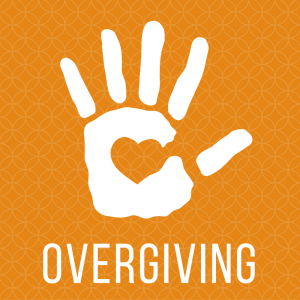 1. Overgiving.
1. Overgiving.
As conscious business founders or those who aspire to start conscious ventures, we are driven not just by the desire to build a sustainable company, but by the desire to serve, to help and to make meaning. That is amazing. It is a defining trait and the world needs more of this ethos.
But, this same lens on what we’re building can also create a fierce urge to “give away” as much as possible in the name of service. This seems like the conscious and service-driven thing to do on the surface, but underneath, you end up gutting the resources and financial viability of the business and making it brutally hard to sustain. You also rapidly suck your and your team’s emotional and energetic reserves dry. Until, eventually, you’ve given so much away, there’s nothing left to give, no business left to run.
It’s a bit like the parable of The Giving Tree, except our goal is not to give ourselves away until we’re gone, but rather to build a renewing source of generosity and service that sustains itself, supports us and never runs out.
When we over-give as a conscious business, we end up “serving it away.” And, instead of building a viable enterprise, we end up out of business.
Solution: Finding the balance between being of service and taking care of business is not easy. But, it is critically important if you want to build a sustainable engine of expression and impact that makes a real difference for a long time. So, create mechanisms to serve as “giving reality checks.” Use a blend of hard metrics—revenue, expenses, resources, inventory, cash-on-hand and cash-flow. Then, add in soft-metric—personal energy, cognitive and emotional bandwidth, social currency and more. Note when either is trending low and take decisive action to adjust course.
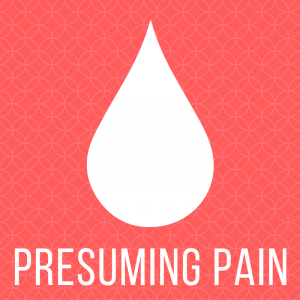 2. Presuming Pain.
2. Presuming Pain.
Whether we’ve already started a conscious business, or we’re in the planning stages, we’ve got to have a customer and a clearly-defined problem that is causing a specific pain that your business or product or service solves.
Problem is, all too often, we think we know the problem, we believe we are crystal clear about the pain it is causing and know that our solution will get rid of both. And, because it’s not unusual for us to launch a conscious business in response to either us or someone close to us having suffered this same problem and pain, we rely on personal experience to validate the problem and pain.
Thing is, we are sometimes right about the problem and pain in our lives (yet often ignore the deeper “real” problem and pain), and often wrong about the problem and pain in other people’s lives. Even if “we were them,” not too long ago. Because problems and pain manifest uniquely in each person. So, we need to go beyond our own personal experience and find those like us, or those we feel are currently experiencing the problem and pain, and…wait for it…actually talk to them. We need to validate our assumptions about the problem and pain, how it manifests in other people’s lives and also uncover the conversation they’re having in their heads about it.
For conscious business founders, we’re often so driven to help, and so often see ourselves and our struggles in others, we want to move inhumanly fast, to rush past or entirely bypass the validation phase. But, failing to test and validate our core assumptions about problems and pain, before building around them because we think we know what people need and want, that is a massive mistake.
Solution: Get out of your head and into the world. Your personal experience may well inform your understanding of the problem and pain in a very substantial way. But you may also have big blind spots. Better to become aware of them early on, and adjust course, than find out after you’ve already invested huge amounts of time and money.
Find where the people you seek to serve gather, then reach out and conduct a series of well-structured interviews. If you already have customers, interview a sample of them AND then go and interview those you’ve spoken with who have NOT purchased your solution as well. Note where your assumptions have been validated, refuted and everything in-between. Then adjust how you move forward based on this new data.
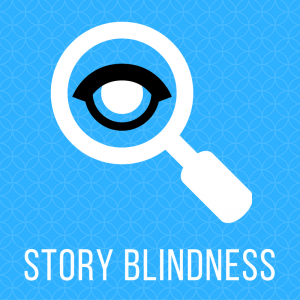 3. Story Blindness.
3. Story Blindness.
We know in our souls what we’re here to do. We know our mission. We know our “backstory,” the thing that fuels us to do something that matters. We know the people we want to serve, their pain, their needs, hopes and desires. And we know we’ve figured out a way to help. Or, at least, we’re on a path to figuring it out.
It resonates so deeply with us, we just assume “it’s so obvious, everyone will get what we’re doing and why, rush to support us and buy what we’re selling.” Conscious business founders often assume this even more than traditional founders. Because the story is so visceral, personal and the cause so deep, we think “how could anyone not automatically see it, get it and want to participate in it?!”
Except, they don’t. And, they won’t. Because we’ve discounted the critical importance of knowing how to tell our story in a way that leads to clarity, demand and support. I’ve seen this in entrepreneurs across all spectrums, they massively underestimate the importance of messaging and storytelling. They’ll often just “wing it,” creating terrible copy for websites, emails, catalogs, social channels, brochures, decks, pitch-letters and more. Then, they’ll be left wondering why nobody cares and they’re failing mightily.
Effective storytelling and copywriting are mission-critical growth levers, yet they are also simultaneously the most undervalued, underinvested skills in the world of entrepreneurship. They are far more often slapped together at the last minute, then experienced as points of failure instead of the engines of growth they could and should be.
This is an even bigger miss for conscious entrepreneurs, because our stories and message, properly crafted and shared, are often so much deeper and more compelling than more traditional “consumer goods” businesses. We have that rare opportunity to rally people to get behind something bigger.
It doesn’t matter how well we know our customers, how pure our intentions are and how good our solution are if we don’t know how to tell the story of all three, along with why we care, in a way that cultivates understanding without effort, urgency, desire and action.
Solution: First, own the critical importance of storytelling, influence levers and copywriting in your path to success. Then, do a quick, intuitive story-audit. Look at the language, in whatever your primary medium is, that you’ve been using to tell that story, to move people to action, and ask if it’s doing justice to you, your mission and your desire to make meaning. If it is, that’s fantastic, it is also a rarity. For many conscious business founders, it is not only ineffective, it is doing real harm by confusing and even pushing away the very people you seek to both serve and rally to help you.
Be honest. If your story/copy isn’t working, time to make a decision. Either invest in cultivating skills in this area yourself OR set aside the resources needed to bring in the best professional possible to help you. I’ve spent more than 15 years developing my storytelling, influence and copywriting skills and the impact on both my business and life has been immeasurable (I’ve also discovered that I love teaching these topics, which has become an extra bonus for me, as well).
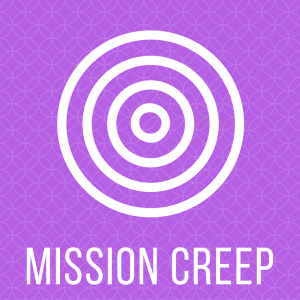 4. Mission Creep.
4. Mission Creep.
We want to build a business that helps people, that lets us feel fully expressed and connected AND also flourishes financially. To do that, we also need to do something challenging. We need to say no to a whole lot of people we can help. We’ve got to narrow our focus as much as possible, at least in the beginning, and serve as specific a need as possible. This is critical, because it lets us not only focus and preserve our resources, it gives us the ability to tell one story to a specific community with a specific need.
For many entrepreneurs, who often have what I call “entrepreneurial ADD,” this narrowing can be a huge challenge. They all want to serve the biggest market possible. For conscious entrepreneurs, it’s often an even bigger challenge, we are so service and mission-driven that we see need, pain and possibility everywhere we look and we have ideas we believe can help. We want to do them all, at the same time, under the same umbrella.
So often, this leads to what I call “mission creep.” A well-defined starting mission starts getting more piled onto it until, over time, it ends up a jumbled calamity of ideas, agendas, initiatives, values, beliefs, products, services and campaigns that become massively overwhelming and spread resources so thin that everything suffers and nothing ever gets “done enough” to matter. Eventually, it all just collapses.
Mission creep dilutes resources, destroys focus and kills growth. It’s the old parable about the wells. We end up drilling a hundred wells that remain shallow for life, never a one yields water, instead of drilling one that hits paydirt, then leveraging that success to fuel the next and the next.
Solution: Do a quick mission-creep audit. Ask yourself what is the most fundamental expression of your mission. What is the narrowest expression of a community or individual you seek to serve? What is the most focused way to help them? Then, ask how that compares to the full-breadth of what you are doing now.
The gap is your mission creep. It is the space where you need to then look at each piled-on item and make a more deliberate decision. To decide what to say yes to, and “not now” to. It’s not that you’re giving up on all the other potential pathways and people, it’s just that you’re saying, “now is not the time.” Because “yes to many,” means an inevitable “no to all,” when the pursuit of all leaves you out of money, time, resources and business.
Stay focused, until you have built the structure and resources to begin to add in a more deliberate, conscious and considered way over time. Think serial, not parallel. It’ll help you succeed and also eliminate a lot of stress along the way.
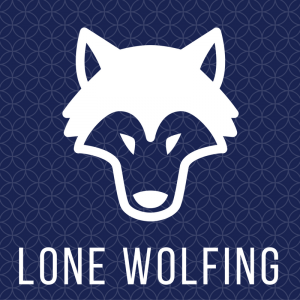 5. Lone Wolfing.
5. Lone Wolfing.
There’s this mythology in the world of entrepreneurship. The lone visionary. The radiant, driven savant capable of making astonishing things happen. We idolize them, write about them, make movies in devotion to them. Except, with rare exception, it’s a complete illusion.
Truth is, in business, just as in life, nobody does it alone. Nobody succeeds in a vacuum. Peel back the illusion just the slightest bit and you realize, all those legendary lone geniuses were only able to do what they did because they were surrounded by visionary people on multiple levels.
If they need people, guess what, so do we. Not just because entrepreneurship can be brutally isolating and lonely, but because the right people make us not only better humans, but more successful founders, builders and meaning-makers. So, who are those people?
We need teachers and mentors to show the way, help correct course, avoid missteps and shorten the distance from idea to impact.
We need champions to hold us up when we stumble (and we will, more than we’d like) and reconnect us with our vision and deeper drivers when we get lost in the smaller picture.
We need crusaders to hold us accountable when we most want to bail (which inevitably is a heartbeat from our next big move), and continue to act when things get hard (and they always will).
We need parallel-playmates, building their own ventures alongside us, sharing in the emotions, questions, struggles and triumphs that bond us for life and let us know that we are truly felt, seen and understood. Because we are them, and they are us.
And, we need a safe container to gather, drop the facade, get real, do the work and know we’ll be seen, heard and supported.
Solution: #FINDYOURPEOPLE!!! Haha, I know. Not so simple. It’s taken me many, many years to find mine. A big part of that was that I didn’t understand the various people and roles that needed to be present. Start by looking within your community, online and local. Make a list of who you know, or would like to know. You may find some hiding in plain view. Then again, you may not.
The challenge for conscious entrepreneurs is that we tend to be a bit of an outlier, even within the entrepreneurial community. Because it’s not just about money for us, it’s about meaning, purpose, expression and potential. It’s about building not just a business, but a life.
The wrap-up.
There we have it. Five major potential stumbling points along the path to conscious business growth, along with five big solutions.
Whether you’re in the very early stages, or years-in looking to correct course or jumpstart growth, each of the five can either be a major point of failure OR a powerful growth lever. This is a great time of year to reflect on where you’ve been and where you want to go in 2017. It’s a window to get real, own your past and envision and plan your future.
So, spend some time with each of the five. Look at them as invitations to be honest, own your stumbles and your wins. Then commit to doing what’s needed to transform struggle and stuck-ness into momentum and success in the year to come.
With a full heart and much gratitude,
Jonathan
